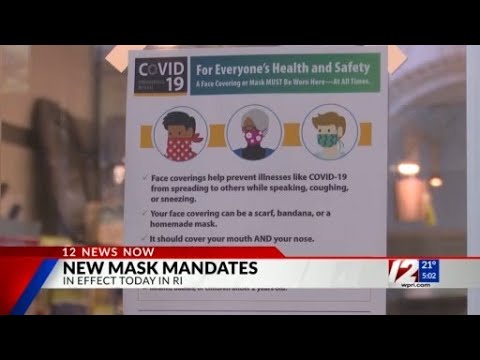Introduction to Kill Shelters in Rhode Island
Animal shelters play a crucial role in ensuring the welfare and safety of animals in need. However, not all shelters operate under the same principles and practices. One controversial type of shelter is the so-called "kill shelter," where animals may be euthanized if they are not adopted within a certain timeframe. In the case of Rhode Island, it is important to examine whether kill shelters exist and to understand the context in which they operate.
Understanding the Concept of Kill Shelters
Kill shelters, also known as high-kill shelters, are facilities where animals are euthanized due to overcrowding or limited resources. The main purpose of these shelters is to prevent animals from suffering on the streets or in abusive situations. Euthanasia is only carried out as a last resort, when there is no other option to provide the necessary care or find suitable homes for the animals.
Examining Rhode Island’s Animal Shelter System
Rhode Island is home to several animal shelters and rescue organizations that work diligently to provide care, shelter, and potential adoptions for animals in need. These shelters operate under different philosophies and practices, with the majority adhering to a no-kill policy. However, it is important to note that some shelters in the state may still practice euthanasia under specific circumstances.
The Current Situation of Kill Shelters in the State
While the majority of shelters in Rhode Island are no-kill, there are a few shelters that may still resort to euthanasia. These shelters often face unique challenges, such as limited space, lack of resources, or animals with severe health or behavioral issues. The decision to euthanize an animal is typically made with the animals’ best interests in mind, to prevent their suffering or to address public safety concerns.
Factors Contributing to the Existence of Kill Shelters
The existence of kill shelters in Rhode Island can be attributed to several factors. Limited space and resources, an influx of animals, and the presence of animals with complex medical or behavioral needs can make it difficult for shelters to accommodate all animals and find suitable homes for them. Additionally, the lack of public awareness and education on responsible pet ownership can contribute to the overpopulation issue, leading to the need for kill shelters.
Legislation and Policies Surrounding Kill Shelters
Rhode Island has legislation and policies in place to regulate animal shelters and protect the welfare of animals. The state requires animal shelters to provide necessary care for animals and encourages them to operate under a no-kill philosophy. However, there are no specific laws prohibiting euthanasia in certain circumstances, allowing shelters to make decisions based on the individual needs of the animals.
The Role of Animal Welfare Organizations in Rhode Island
Animal welfare organizations in Rhode Island play a vital role in promoting animal adoption and reducing the need for kill shelters. These organizations work tirelessly to rescue animals, provide medical care, and facilitate adoptions. They also provide education on responsible pet ownership and advocate for stricter spay/neuter laws to control the pet population.
Efforts to Minimize Kill Shelters in the State
Several initiatives have been implemented in Rhode Island to minimize the need for kill shelters. These efforts include increased collaboration between shelters to share resources and find suitable homes for animals. Additionally, many shelters prioritize proactive strategies, such as extensive adoption programs, foster care networks, and behavior rehabilitation, to increase the chances of finding permanent homes for animals.
Successful Alternatives to Kill Shelters in Rhode Island
Rhode Island has seen success in implementing alternative approaches to euthanasia. Programs such as "trap-neuter-return" for feral cat populations, low-cost spay/neuter clinics, and community outreach programs have helped reduce the number of animals in shelters and prevent overpopulation. Furthermore, increased public awareness of adoption opportunities and responsible pet ownership has positively impacted the number of animals being euthanized.
Collaborative Initiatives to End Kill Shelters
Various collaborative initiatives have been established in Rhode Island to work towards the ultimate goal of ending kill shelters. These initiatives involve partnerships between shelters, rescue organizations, and the community. By sharing resources, knowledge, and expertise, these collaborations aim to increase the number of animal adoptions, promote spay/neuter programs, and provide support to shelters facing challenges.
Public Awareness and Education on Animal Adoption
Public awareness and education play a crucial role in reducing the need for kill shelters. In Rhode Island, efforts are underway to educate the public about the importance of adopting animals from shelters rather than purchasing from breeders or pet stores. This includes campaigns highlighting the benefits of adoption, the variety of animals available for adoption, and the impact of responsible pet ownership on reducing the number of animals in shelters.
Conclusion: Progress and Challenges in Rhode Island’s Animal Shelters
Rhode Island has made significant progress in reducing the need for kill shelters through various initiatives, legislation, and collaborative efforts. The majority of shelters in the state operate under a no-kill philosophy, prioritizing the welfare and care of animals. However, challenges still exist, such as limited resources and an ongoing need for public awareness and education. By continuing to support animal welfare organizations, promoting responsible pet ownership, and implementing successful alternatives, Rhode Island can further minimize the need for kill shelters and provide a better future for its animals.




